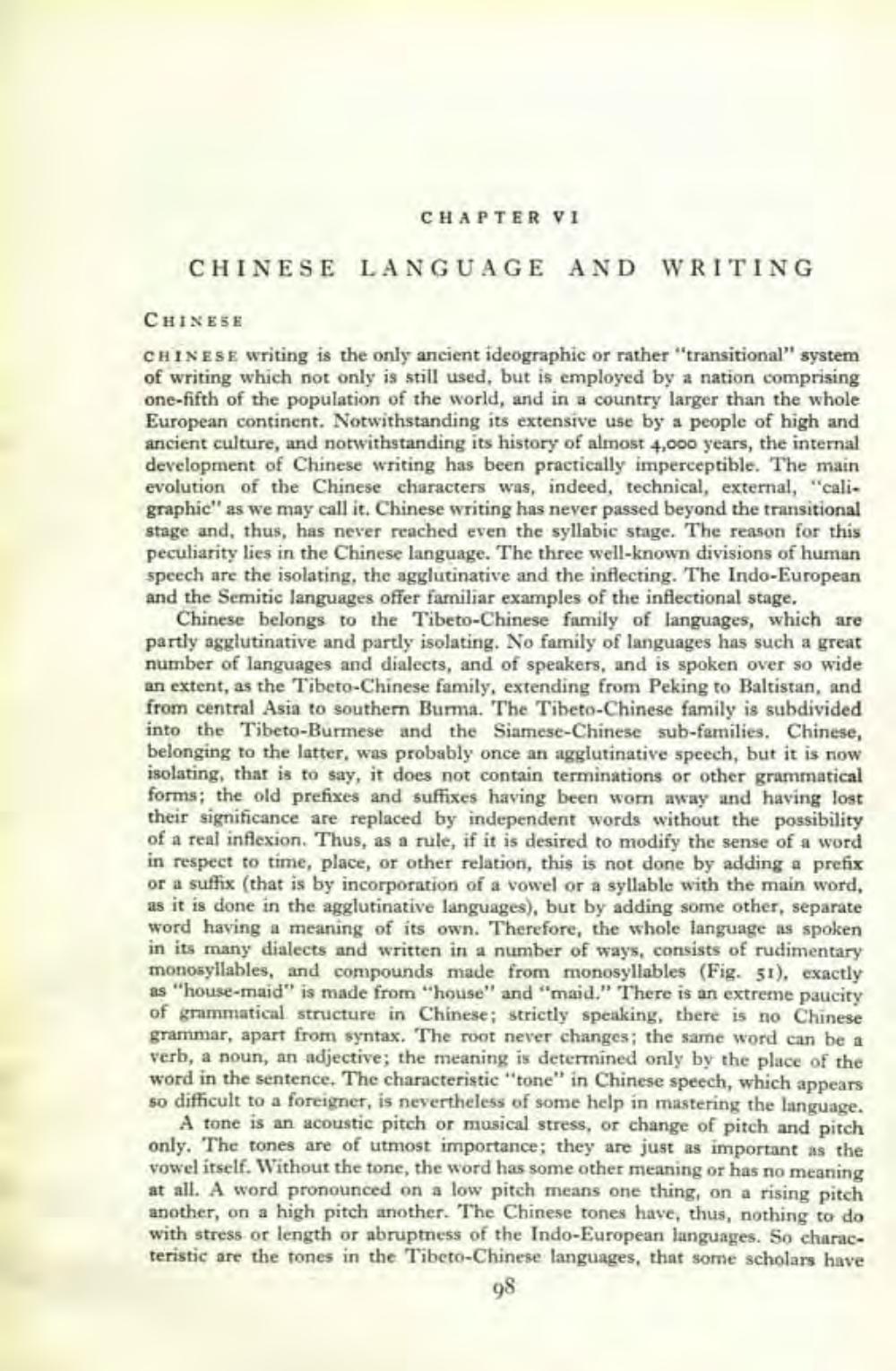________________
CHAPTER VI
CHINESE LANGUAGE AND WRITING
CHINESE CHINESE writing is the only ancient ideographic or rather "transitional" system of writing which not only is still used, but is employed by a nation comprising one-fifth of the population of the world, and in a country larger than the whole European continent. Notwithstanding its extensive use by a people of high and ancient culture, and notwithstanding its history of almost 4,000 years, the internal development of Chinese writing has been practically imperceptible. The main evolution of the Chinese characters was, indeed, technical, external, "caligraphic" as we may call it. Chinese writing has never passed beyond the transitional stage and, thus, has never reached even the syllabic stage. The reason for this peculiarity lies in the Chinese language. The three well-known divisions of human speech are the isolating, the agglutinative and the inflecting. The Indo-European and the Semitic languages offer familiar examples of the inflectional stage,
Chinese belongs to the Tibeto-Chinese family of languages, which are partly agglutinative and partly isolating. No family of languages has such a great number of languages and dialects, and of speakers, and is spoken over so wide an extent, as the Tibeto-Chinese family, extending from Peking to Baltistan, and from central Asia to southern Burma. The Tibeto-Chinese family is subdivided into the Tibeto-Burmese and the Siamese-Chinese sub-families. Chinese, belonging to the latter, was probably once an agglutinative speech, but it is now isolating, that is to say, it does not contain terminations or other grammatical forms; the old prefixes and suffixes having been wom away and having lost their significance are replaced by independent words without the possibility of a real inflexion. Thus, as a rule, if it is desired to modify the sense of a word in respect to time, place, or other relations, this is not done by adding a prefix or a suffix (that is by incorporation of a vowel or a syllable with the main word, as it is done in the agglutinative languages), but by adding some other, separate word having a meaning of its own. Therefore, the whole language is spoken in its many dialects and written in a number of ways, consists of rudimentary monosyllables, and compounds made from monosyllables (Fig. 51), exactly as "house-maid" is made from "house" and "maid." There is an extreme paucity of grammatical structure in Chinese; strictly speaking, there is no Chinese grammar, apart from syntax. The root never changes; the same word can be 1 verb, a noun, an adjective; the meaning is determined only by the place of the word in the sentence. The characteristic tone" in Chinese speech, which appears so difficult to a foreigner, is nevertheless of some help in mastering the language.
A tone is an acoustic pitch or musical stress, or change of pitch and pitch only. The tones are of utmost importance; they are just as important as the vowel irself. Without the tone, the word has some other meaning or has no meaning at all. A word pronounced on a low pitch means one thing, on a rising pitch another, on a high pitch another. The Chinese tones have, thus, nothing to do with stress or length or abruptness of the Indo-European languages. So characteristic are the tones in the Tibeto-Chinese languages, that some scholars have
98




